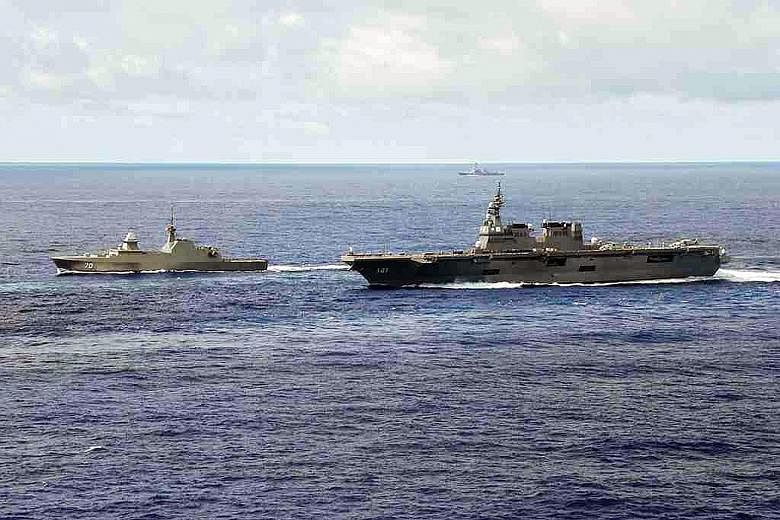From fighting pirates to leading two global giants in an exercise, the Republic of Singapore Navy (RSN) is showing its steel.
RSN led its counterparts from the United States and Japan in a group sail last month, reflecting a growing recognition of its capabilities, observers said.
An RSN frigate became the first ship from outside the US Navy (USN) to lead a multinational group sail to the Rim of the Pacific (Rimpac) Exercise, the world's largest international maritime exercise.
It led two other warships - one from the Japan Maritime Self-Defence Force and the other from the USN - in a sail from Okinawa to Hawaii. On the way, it coordinated helicopter operations, surface warfare drills, gunnery firings as well as manoeuvring and communications serials.
Being tasked to lead the group sail reflects "an affirmation of the skill that RSN brings to the table", said Associate Professor Bernard Loo, a defence analyst at the S. Rajaratnam School of International Studies (RSIS).
That confidence in the RSN stems from proving its worth in other operations, such as commanding anti-piracy task forces in the Gulf of Aden, he said. RSN took charge of the multinational Combined Task Force (CTF) 151, which counters piracy in the Gulf of Aden, for four three-month stints since 2010.
"Commanding the CTF 151 is as high a validation of your skill as you can get in the absence of a shooting war," Prof Loo said.
Dr Collin Koh, a research fellow and maritime security analyst at RSIS, also agreed that the RSN's leadership of the group sail showed it had earned its spurs through operations in the Gulf of Aden.
"They did not one day very randomly say, 'I appoint this navy to be the leader of the multinational group sail'. The leading of the multinational sail is a symbol of Singapore navy's growing outreach overseas."
While not as complex as anti-submarine warfare training or missile live firing, leading the group sail through the open sea in the Western Pacific Ocean, where waters can be turbulent, requires expertise, Dr Koh added.
Singapore's leading the group sail also reflects that it can communicate and coordinate with the US and Japanese navies, said Dr Graham Ong-Webb, a research fellow with the military studies programme at RSIS. Only certain navies can exercise effectively together because this requires compatible systems, he noted.
Lieutenant-Commander Arlo Abrahamson, a spokesman for the US Seventh Fleet, added that the US allowing the RSN to lead the group sail showed there was "a lot of confidence in (it)".
He said the RSN is a "recognised and respected leader throughout the Indo-Asia-Pacific region".
"Regular exercises and naval engagements such as Carat (Cooperation Afloat Readiness and Training) and Seacat (South-east Asia Cooperation and Training) create trust and confidence between our navies and sets the conditions for working in multilateral group sails where the RSN takes the lead," he said.

